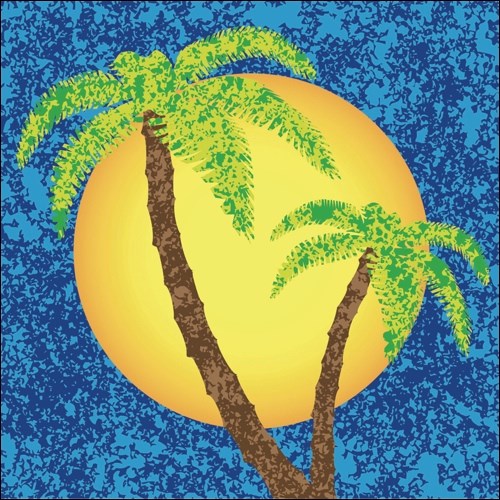Palm trees are found throughout the tropic and sub-tropic areas around the world. They are a versatile choice for the landscape and have many domestic, commercial and industrial uses. The sound of the wind through the fronds is unique and to many of us the thought of palm trees conjures up happy thoughts.
On a recent trip to the Florida Keys we observed something different. A lot of activity removing unripe coconuts from coconut palm trees (Cocos nucifera ) was observed every place we stopped to eat, have refreshment or relax. This activity of coconut removal got us thinking.
Some interesting information came up when searching for "death by coconut.” Did you know falling coconuts kill 150 people across the world each year? This is 15 times the number of fatalities that are attributable to sharks. Aha, the mystery was solved. It has become necessary to remove the unripe coconuts for human safety. Who would have thought that the romance of the coconut needs to be compromised by pruning?
The coconut palm belongs to the palm family (Arecaceae) and contains thousands of different types that are mostly trees. However, there are many shrubs as well as many palms that are not even close to the typical palm we think of. It is amazing palms are so varied in their cultural requirement they can live in different climates ranging from deserts to rainforests. Historically, they were the symbol for victory, peace and fertility, but today they are most often associated with warm weather holidays.
We most often think of the palms with the straight unbranched stem topped by a cluster of fronds. The fronds or leaves are either "feather-leaved" or "fan-leaved" and happily adorn the stem somewhat like the head of a mop. The flowers grow as a branch or inflorescence that contain many tiny flowers. The fruit is usually a single seed surrounded by flesh.
There are many things about palms that are unusual. If the main bud at the top of the trunk is damaged, the palm will stop growing and die. The trunk of a palm tree does not get thicker, only taller. The Raffia palm has leaves that are up to three metres wide and up to 25 metres long, while the corypha palm has the largest inflorescence that is up to 7.5 metres tall and has millions of small flowers. Coco de mer has the largest seed being 30-50 centimetres in diameter and weighing a whopping 15 to 30 kilograms each.
The oldest palm tree dates back to the late Cretaceous Period, which is approximately 80 million years ago. We still can enjoy two of these palms — the nipa and mangrove palm. It is amazing to see something that has lived for 80 million years. The use of palms by humans also dates back a long time with Mesopotamians and other people using parts of palms over 5,000 years ago. Palms today are still out to use for a variety of uses from oils, to food and cosmetics.
So now, the coconut and the palm have much more meaning to you and I. Next time you are on a beach or just stuck in winter, share some palm trivia. For an extra chuckle search Youtube for a song by Bob Gibson and Shel Silverstein, Killed by a Coconut.
— Hanbidge is a horticulturist with the Saskatoon School of Horticulture and can be reached at 306-931-GROW(4769); by email at [email protected] or check out our website at saskhort.com




